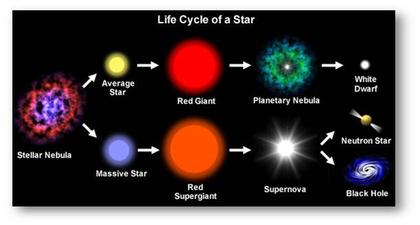The Universe
- Stars
| Back | Home |
Brightness
Two factors are obvious about stars
- – due to temperature
We measure brightness as a measure of
Generally, magnitude is measured on a scale originally from 1 to 6 with
Since the scale was devised some objects fall outside these ranges and very bright objects can have values in the
The scale is logarithmic meaning
For example a magnitude 5 star is brighter than a magnitude 6 star.
Similarly a magnitude 4 star is 2.5 times brighter than a magnitude 5 star but is times brighter than a magnitude 6 star.
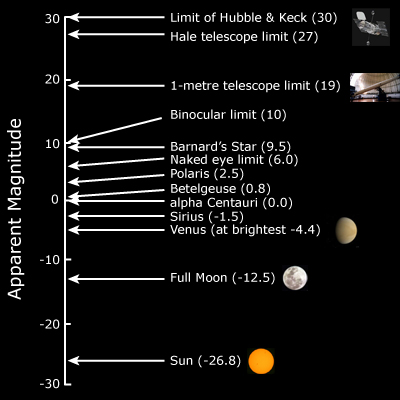 Apparent magnitude is how Obviously, if all stars had the same brightness, the ones closer to us would appear brighter. In actuality, bright stars might be close to us or not and this will mean they appear brighter or dimmer based on how far away they are. This is the apparent magnitude.
Apparent magnitude is how Obviously, if all stars had the same brightness, the ones closer to us would appear brighter. In actuality, bright stars might be close to us or not and this will mean they appear brighter or dimmer based on how far away they are. This is the apparent magnitude.
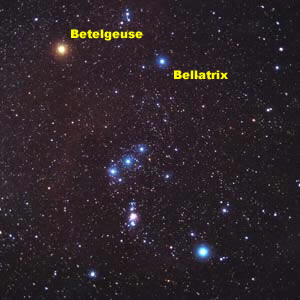 For example and Bellatrix in the
For example and Bellatrix in the
Betelgeuse has an apparent magnitude of 0.6 and Bellatrix has an apparent magnitude of 1.6. Since Betelgeuse has a magnitude about 1 x greater than Bellatrix it appears about .
But which is closer?
The Distances Between Stars
The kilometer is too small to measure the immense distances in space. Often we use (l.y.), which is the distance light travels in one year. Since light travels at So in 1 year light will travel about 9.5 x 1014 kilometers or .
Betelgeuse is . away!!!!!
Another measure used in space is the (pc) a parsec is
Betelgeuse is away!
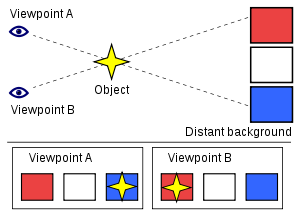 The Parsec is based on the idea of parallax. Parallax is the .
The Parsec is based on the idea of parallax. Parallax is the .
The to us the more parallax we notice.
Thus, close stars appear to move in the sky as we orbit the sun
Even close stars only move less than 1/1000 th of a degree.
Absolute magnitude
This is a measure of how bright a star would appear to us if it were .
Example:
If Betelgeuse was 10 pc (it is actually about 200pc away) from Earth it would have a magnitude of
have a magnitude of at 10 pc. (Remember the small the number the brighter the star)
Colour
< This is only a small part of the Electromagnetic (EM) spectrum. But it is how we see stars.
The colours can range from through to (like a rainbow).
Although stars emit light from the red side to the blue side they have colour areas from which they .
For example, cooler stars emit more than hotter stars that emit more .
Colour is related to .
Another device used to analyse stars is a (which works to spilt light into its component colours – like a rainbow)
It is possible to determine what are present in a star by the use of a spectrometer.
Eg an of the sun

Notice the lines indicate the presence of and
From the different stars scientists have a classification of stars by spectral classes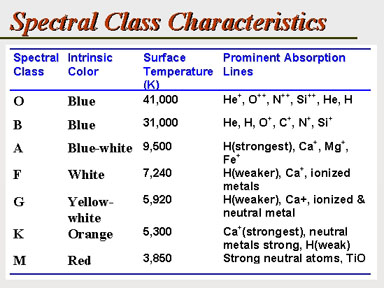
Nuclear Fusion
Because there is a lot of matter (mass) in a star, there is a . Most of a normal star is made up of hydrogen.
As the gravity of the star it . This causes hydrogen atoms to (join) together to form and some is given off.
This energy is the energy we get from the sun
.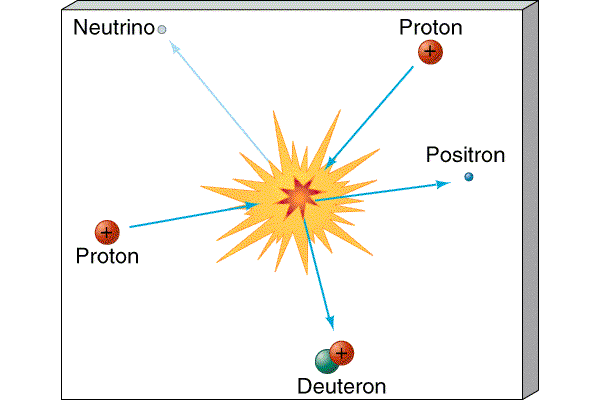
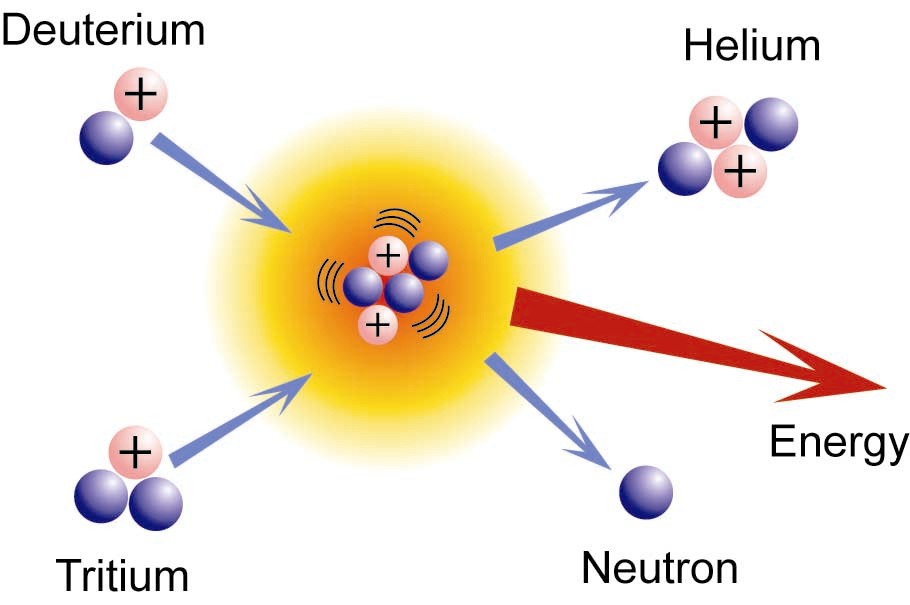
The Life Cycle of Stars
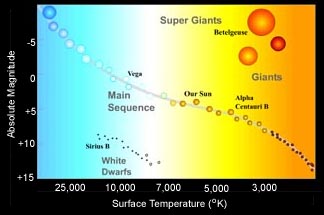 Hertzsprung-Russell diagrams
Hertzsprung-Russell diagrams
A system for classifying stars usually using and
Stars tend to move in this diagram over periods of time as they
Main sequence
The band of stars stretching from the top right to the bottom left of the HR diagram are called The stars in the top left are and temperatures whereas those in the bottom left are and temperature.
As stars age they can get (ie move from top right to bottom left), thus they may move places in the HR diagram. This happens after of years.
Red Giants
A main sequence star cools as it gets older. As it cools it in on itself (due to gravity) the gases that are left on the outside of the star start to and as they do they and as they expand they .
So we have a cool star () expanding (making it ) --> .
In only about the red giant will continue to collapse and the outer layers will escape as a cloud of gas called a . The core gets very hot and emits light creating a spectacular celestial sight.

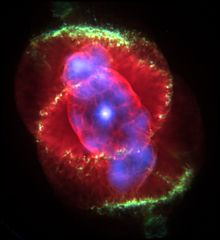
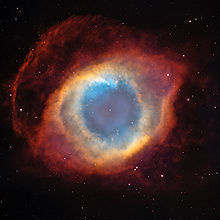
Super Giants
Stars bigger than our sun start in the main sequence but because they are so big they use up their energy much quicker. But due to their size they don’t as quickly and they move slowly from in the HR diagram. As they run out of energy eventually they undergo a spectacular change called a
Supernovae
These come about because most of the material in the inner core has been fused into iron (it cannot fuse into other elements) and it becomes very massive pulling more and more to the middle. As the iron collapses it collides producing a called a supernova.
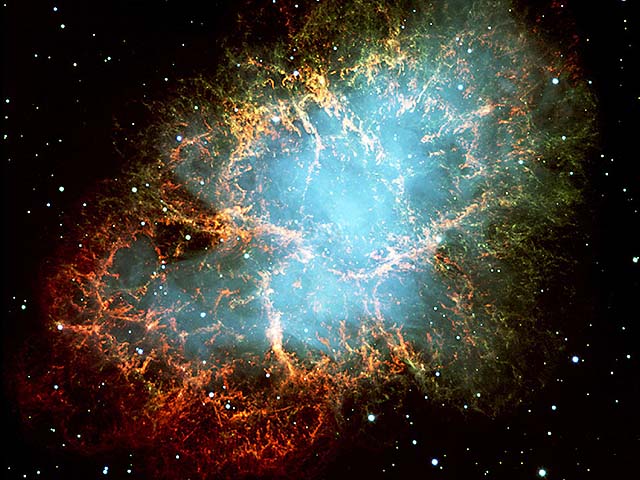 The is an amazing example of a supernova.
The is an amazing example of a supernova.
What’s left can (if mass of material left is the mass of our sun) form a . It’s called a neutron star because and fuse together to form .
Black Holes
If the mass left after a supernova is greater than our sun, the matter ends up compacting together so tightly that not even can escape from its gravitational pull. This is called .
They are very hard to detect because they do not emit any . Two indirect ways are:
- The effects on a close star in a arrangement.
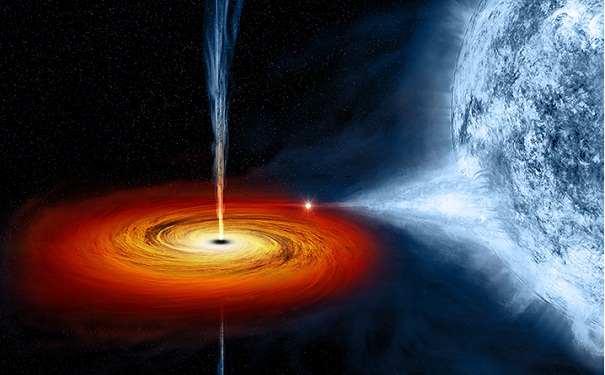
- The of light passing from a star behind the black hole.
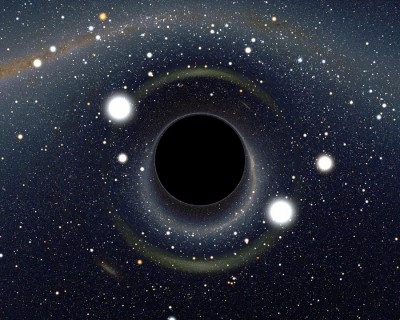
A summary of star life cycles is such
